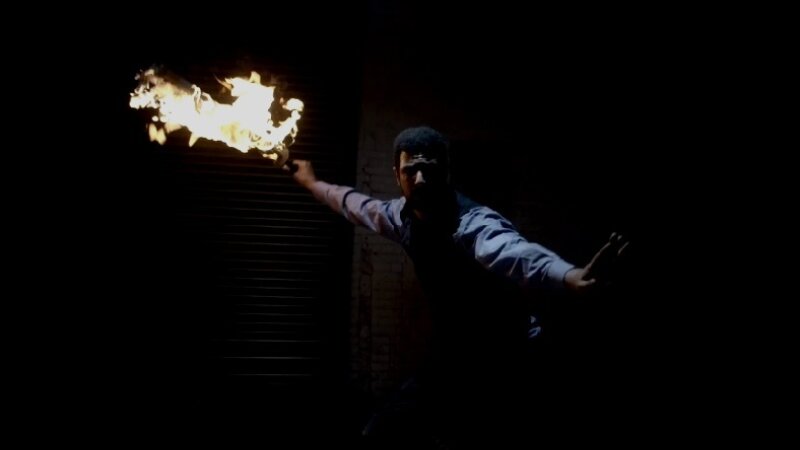Hypnotherapy: Communicating with the mind
“Look into the eyes. Not around the eyes, directly into the eyes…”
Fortunately the idea of concentric, enlarged irises bearing down on you with some suspicious character playing puppet master with your mind is beginning to wane. Or is it? Stage hypnotism is more popular than ever and, despite being slightly comedic, preserves some unhelpful misconceptions regarding hypnosis.
The etymology of the word is rooted in ancient Greek – ‘hypnos’ meaning sleep and ‘osis’ meaning condition. The exact origins of hypnosis are unclear, but we know it was also practised in Egypt and the Persians in the early middle ages. By the 1500s hypnosis had been adopted by leftfield physicians and doctors in Europe, the epicentre being Vienna in the heart of the Austro-Hungarian empire, of which subsequent notable residents would take an interest in hypnosis during the 19th century, namely Carl Jung and Sigmund Freud.
European enlightenment was not kind to hypnosis. Amid the tense atmosphere and friction between societies driven by religion and the rise of scientific thought, suspicions and demonisation of hypnosis arose. Franz Anton Mesmer both popularised and played a key role in the making of its mythology. Influenced by Isaac Newton’s theories around gravity, Mesmer used magnets to alter the flow of bodily functions within affected individuals, as the moon does the oceans. He enjoyed much success, holding public demonstrations using wild and flamboyant contraptions said to help him channel magnetic powers, until in 1784 the King of France, Louis XVI, investigated his practice, discrediting his ideas about these early roots of hypnosis, which he referred to as ‘animal magnetism’. Crucially, the conclusion of the inquiry was that the apparent successes of Mesmer stemmed from the imagination of his patients and their sheer belief that the process would work.
Imagination. What a funny thing. That ability to construct vivid, complex scenes, develop abstract notions, relive past experiences, project ourselves into the future. Most modern thinking suggests that anything inside your mind isn’t real. If you can’t touch it, it isn’t there. But let’s take the body’s stress response mechanism. We imagine speaking in front of an audience, a scenario we are worried about - adrenaline is released, heart rate increases, we feel anxious. The symptoms are clearly real, but the trigger isn’t. This doesn’t make sense. The imagination produces real world change and we find that our thoughts are one end of an unbroken continuum running from mind to bodily response and vice versa. King Louis was right.
Hypnotherapy is about changing negative behaviours, so it seems logical to think about how these behaviours develop and how they are stored in the mind. If we desire to change them, we must first be able to access them. Crudely, the brain can be divided into two categories - the old brain and the new brain. The new brain developed late in our evolution and deals with the conscious and rational aspects of our awareness. For example, allowing us to process and analyse maths and logic. The old brain, also referred to as the reptilian brain, deals with subconscious processes like breathing and secretive functions and importantly houses our learned behaviours and habitual thinking. It’s this split between the two brains that we are trying to move between when practising hypnotherapy.
Communication must be done through a mutually understandable system. The primary communication systems we use today are made up of letters, words and grammatical rules, and are born of the new, logical mind. They are tools devised long after the old regions had become fully developed. If we want to converse with the old mind we must use its language, and this language is imagination. Carl Jung spent much of his life trying to unravel the subconscious and his conclusion - that dreams and images welling up from the subconscious make little sense to the rational mind - is based on this misunderstanding between the two brains.
The learning of a new behaviour begins in the new, conscious mind and as it becomes learned and we no longer have to think of its complexities, it passes into the subconscious. It is at this point behaviours become unreachable by the language of the conscious mind. If we want to communicate, tell them they are unreasonable and ask whether they wouldn’t mind being a little less destructive then we must do so in a manner that is intelligible.
It’s all very well talking about symbol systems and reptilian brains, but what can you expect in a practical sense when you walk into a hypnotherapist’s office for an hour or so? Firstly you will talk about the problem at hand. The therapist may encourage exploration of behavioural triggers and investigate your perception of your behaviour in the context of your environment and personality. Then the therapist will place you into a trance state. This is essentially a particularly relaxed yet focused state of mind, commonly achieved through meditative breathing and guided sequential relaxation of the body. Once in trance, visualisation scenarios pertaining to problem solving will probably be described along with metaphorical stories using abstract subtexts to communicate with the subconscious mind. Less esoteric, more direct information is often given toward the end of the process, giving plain, clear suggestions about changing problematic behaviours. Depending on the depth of the trance attained, it may take a few minutes to become re-orientated to the room, like waking from a deep sleep.
The truth is there is nothing the hypnotherapist is providing that isn’t there already. People have a limitless resource - the mind. With its great power and infinite corridors of thought one can become lost, bamboozled within interminable, cyclical loops. Hypnotherapy is an exit door, and the lock is not magnetic.
sheffieldcityhypnotherapy.co.uk )





